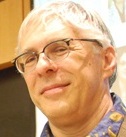7.13: Mutations and evolution
- Page ID
- 4710
There are often multiple alleles of a particular gene in the population and they all may be equally normal, that is have similar effects on reproductive success andin terms of the phenotypes they produce. If there is no significant selective advantage between them, their relative frequencies within a population will drift. At the same time, the phenotype associated with a particular allelecan be influenced by which alleles are present at other genetic loci, known as the genetic background. Since most traits are the results of hundreds or thousands of genes functioning together, and different combinations of alleles can produce different effects, the universe of variation is large. This can make identifying the genetic basis of a disease difficult, particularly when variation at any one locus may make only a minor contribution to the disease phenotype. On top of that, environmental and developmental differences can outweigh genetic influence on phenotype. Such genetic background effects can lead to a particular allele producing a disease in one person and not another221.
Mutations are the ultimate source of genetic variation – without them evolution would not occur. Mutations can lead to a number of effects, in particular, they can create new activities. At the same time these changes may reduce the original (and necessary) activity of an important gene. Left unresolved such molecular level conflicts would greatly limit the flexibility of evolutionary mechanisms. For example, it is common to think of a gene (or rather the particular gene product it encodes) as having one and only one function or activity, but in fact, when examined closely many catalytic gene products (typically proteins) can catalyze “off-target” reactions or carry out, even if rather inefficiently, other activities - they interact with other molecules within the cell and the organism. Assume for the moment that a gene encodes a gene product with an essential function as well as potentially useful (from a reproductive success perspective) activities. Mutations that enhance these “ancillary functions” will survive (that is be passed on to subsequent generations) only to the extent that they do not (overly) negatively influence the gene’s primary and essential function. The evolution of ancillary functions may be severely constrained or blocked altogether.
This problem can be circumvented based on the fact that the genome is not static. There are molecular level processes through which regions of DNA (and the genes that they contain) can be deleted, duplicated, and moved from place to place within the genome. Such genomic rearrangements, which are mutations, occur continuously during embryonic development. The end result is that while most of the cells in your body have very similar genomes (perhaps consisting of single base pair changes that arose during DNA replication), some have genomes with different arrangements of DNA. These differences can include deletions, duplications, and translocations (moving a region of DNA from one place to another in the genome). Not all cells in your body will have exactly the same genome222.
In the case above illustrated in the figure, imagine that the essential but multifuntional gene is duplicated. Now one copy can continue to carry out its essential function, while the second is free to change. While many mutations will negatively effect the duplicated gene, some might increase and refine its favorable ancillary function. A new trait can emerge freed from the need to continue to perform its original (and essential) function. We see evidence of this type of process throughout the biological world. When a gene is duplicated, the two copies are known as paralogs. Such paralogs often evolve independently.
Contributors and Attributions
Michael W. Klymkowsky (University of Colorado Boulder) and Melanie M. Cooper (Michigan State University) with significant contributions by Emina Begovic & some editorial assistance of Rebecca Klymkowsky.


